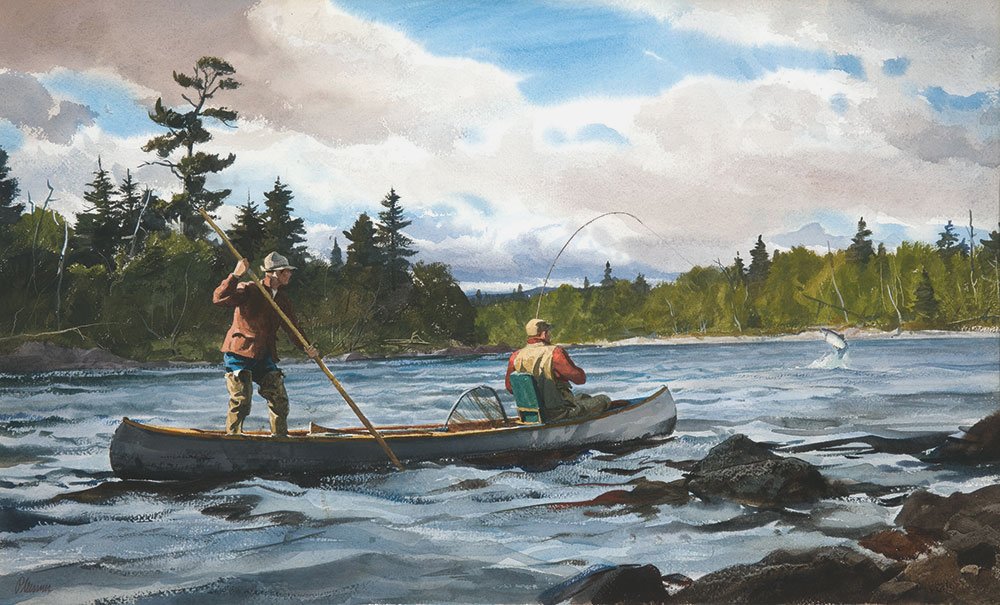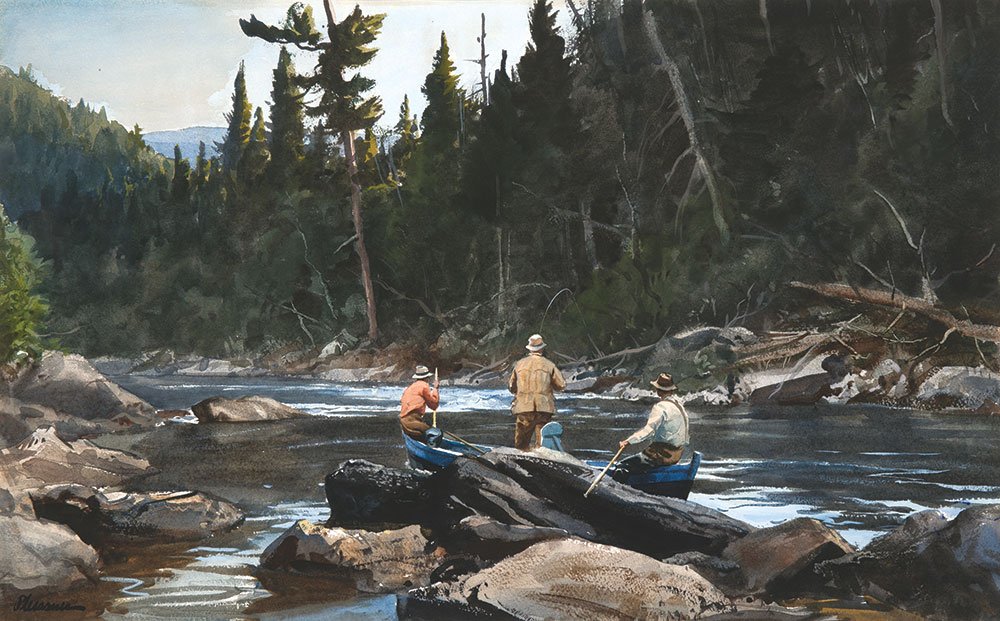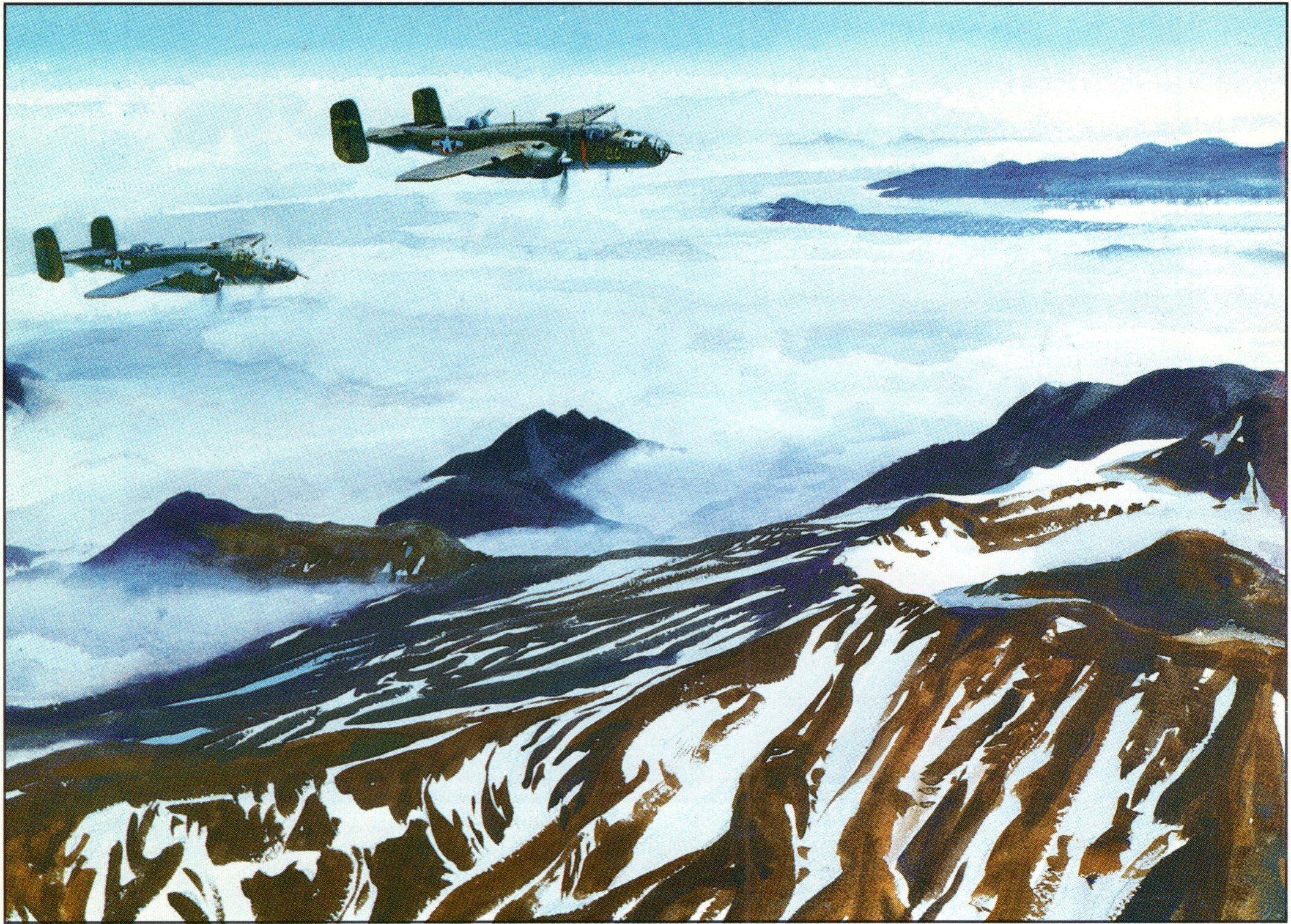On Pleissner
Poling Upriver, watercolor on paper 14.25 x 20.5 inches
This entry, the second in a series of art history posts, is a tribute and short bio of my favorite sporting artist of all time, Ogden Pleissner. I like him so much, I named my dog after him.
“You can say that a picture has a sense of place, but in a painting, a landscape, to me it’s the mood conveyed that counts.” -O.P.
Pleissner was born in Brooklyn, and had a fairly long career as an artist, beginning as a student at the Art Students League of New York, and ending with his death in 1983 in London, England. He taught at the Pratt Institute from 1930-1934, and the National Academy of Design from 1935-1937. During this time, he was somewhat of a fixture in the elite sporting world, which was mostly made up of rich carpetbaggers from New York and Boston who spent winters in the South Carolina low country, Florida, and the Caribbean. His sporting scenes depicted a pretty well established idiom of the time: hunters and anglers in spectacular landscapes.
Western Pheasant Hunting, watercolor on paper 18 x 28 inches
Pleissner loved the American west, having spent his adolescent summers in Wyoming with his family. As an adult, he enjoyed trips to the Adirondacks, Nova Scotia, and New England. His immense body of work covers everything from grouse and waterfowl hunting to salmon fishing. One common thread through his work is that the action is understated.
Grassing the Boat, watercolor on paper 16 x 20 inches
Pleissner’s sporting art to me is remarkable because of the contrast between his figure’s poses and the excitement of their sport. The sudden chaos of a pheasant bursting from the brush is somehow relaxing thanks to the softness of his portrayal. His subjects are usually posed in action, but also sometimes content to watch as the scene unfolds in front of them.
Salmon Fishing on the Miramichi, watercolor
His sporting scenes are romantic but accessible. He was a Realist after all. I especially connect to his paintings of canoe scenes, particularly the implied camaraderie between the subjects. These days when I’m on the river, I’m just as happy to watch a good friend fish as I am to fish myself.
Grouse Shooting, watercolor on paper, 16 x 28 inches
Fishing the George, watercolor on paper 16½ x 26½ inches
During World War II, Pleissner was enlisted in the U.S. Airforce as a captain in the Historical Division, stationed in the Aleutian Islands. He was commissioned to document the war efforts with paintings. He did most of his work in this period with watercolor, because it dried much quicker than oil paint in the wet Alaskan climate. He could be seen running in and out of his hut to dry a layer of paint by the fire before darting back into the elements to finish his work. Later in the war he was employed as a War Correspondent for Life Magazine in Europe where he painted a lot of scenes of urban life in France, Italy and Spain.
B-25 Bombers Over Aleutian Volcano, 1945
Pleissner is pretty much unanimously recognized as one of the gold standard painters of American sporting art. You can browse his work in a few collections online, and see some originals in galleries like the Sportsman’s Gallery in Charleston, SC. Look for more posts coming soon on some of the other founding fathers of this genre. I hope you learned something, and that this small contribution stokes a little bit of interest.







